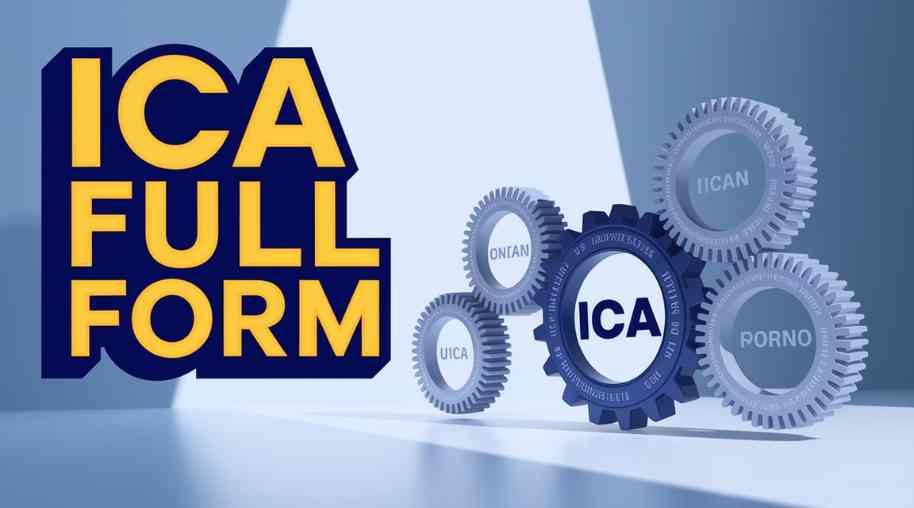ICA Full Form-Inter creditor Agreement
by Shashi Gaherwar
0 2208
Inter Creditor Agreement: A Framework for Resolving Financial Distress
An **Inter Creditor Agreement (ICA)** is a contractual framework that defines the rights and responsibilities of multiple lenders involved with a common borrowing entity. It plays a **crucial role** in **loan restructuring** and **financial distress resolution**, ensuring smooth coordination among creditors and preventing disputes over **asset recovery**. The ICA is particularly significant in managing **stressed assets** and **non-performing loans**, facilitating a structured resolution process. This article explores the concept, objectives, legal framework, benefits, challenges, and its impact on **financial institutions**.

What is an Inter Creditor Agreement?
An **Inter Creditor Agreement** is a legally binding arrangement between multiple lenders who have provided credit to the same borrower. The agreement establishes a structured approach for **debt resolution**, **repayment prioritization**, and **collateral enforcement** in case of default.
Objectives of the Inter Creditor Agreement
The key objectives of an ICA include:
- Streamlining Debt Resolution: Prevents conflicts among lenders and ensures a collective approach to resolving **financial distress**.
- Protecting Lenders’ Interests: Defines **priority rights** and recovery procedures among different classes of lenders.
- Enhancing Credit Discipline: Encourages borrowers to comply with **repayment schedules** by minimizing legal disputes.
- Facilitating Timely Decision-Making: Speeds up resolution by enabling **majority lenders** to take decisive actions.
Legal Framework and RBI Guidelines
In India, the **Reserve Bank of India (RBI)** introduced the Inter Creditor Agreement framework in 2018 as part of the **Sashakt Plan** to address **stressed assets** in the banking sector. Key features include:
- Eligibility: Applicable to borrowers with aggregate exposure of **₹50 crore and above**.
- Majority Rule: Decisions are binding if agreed upon by **75% of creditors by value** and **60% by number**.
- Resolution Plan Timeline: Lenders must implement a resolution plan within **180 days** of identifying financial stress.
- Priority of Claims: Establishes **repayment preferences** among secured and unsecured lenders.
- Dispute Resolution: Mechanisms to resolve conflicts among lenders through a **structured process**.
Pro Tip: The RBI’s guidelines ensure a standardized approach to managing stressed assets effectively.
Key Provisions of an Inter Creditor Agreement
The ICA includes several critical provisions:
- Debt Ranking and Payment Order: Defines the **priority order** of loan repayments among secured and unsecured creditors.
- Collateral Sharing: Specifies how lenders can exercise rights over **shared collateral assets**.
- Decision-Making Framework: Establishes **voting thresholds** and processes for restructuring or liquidation.
- Default and Enforcement Mechanisms: Outlines actions for **borrower default** scenarios.
- Exit Clauses: Specifies how lenders can **exit the agreement** or transfer their loan exposure.
Benefits of the Inter Creditor Agreement
The ICA offers numerous **advantages** to financial institutions:
- Improved Coordination Among Lenders: Ensures alignment of interests and prevents **unilateral actions** by individual lenders.
- Faster Resolution of Stressed Assets: Streamlined decision-making leads to quicker **loan restructuring** or recovery.
- Reduction in Legal Disputes: Minimizes the risk of **prolonged litigation** and conflicting claims.
- Enhanced Financial Stability: Strengthens the banking system by improving **non-performing asset (NPA)** management.
- Incentivizes Borrower Compliance: Encourages borrowers to engage in **fair repayment practices**.
Key Benefit: The ICA fosters a collaborative environment for resolving complex debt scenarios.
Challenges in Implementing an Inter Creditor Agreement
Despite its benefits, the ICA faces several **challenges**:
- Divergent Interests of Lenders: **Secured and unsecured lenders** often have conflicting priorities in debt recovery.
- Delays in Reaching Consensus: Disagreements among lenders can slow down the **resolution process**.
- Legal and Regulatory Complexities: Variations in **banking laws** and **insolvency proceedings** create hurdles.
- Borrower Resistance: Some borrowers exploit **procedural delays** to avoid repayment.
- Impact of Market Fluctuations: **Economic downturns** and changing financial conditions affect debt recovery strategies.
Case Study: Inter Creditor Agreement in India
A notable example of ICA implementation in India is its role in resolving **stressed assets** under the **Sashakt Plan**. Many large corporate borrowers, including **infrastructure** and **real estate firms**, have undergone **debt restructuring** under ICA frameworks. This approach has helped banks recover loans while ensuring **business continuity** for borrowers.
The Future of Inter Creditor Agreements
With evolving **financial regulations** and growing **economic uncertainties**, the ICA framework is expected to undergo further refinements. Key trends include:
- Integration with Insolvency and Bankruptcy Code (IBC): Aligning ICA provisions with **national bankruptcy laws**.
- Adoption of Digital Platforms: Enhancing **transparency** and efficiency through **blockchain-based agreements**.
- Stronger Regulatory Oversight: Implementing **stricter compliance measures** for fair ICA execution.
- Harmonization with Global Standards: Aligning ICA practices with **international financial resolution frameworks**.
The **Inter Creditor Agreement** is a **crucial tool** in managing **loan defaults**, **financial distress**, and **multi-lender coordination**. By establishing clear rights and responsibilities among creditors, the ICA enhances the efficiency of **debt restructuring** and **asset recovery**. However, challenges related to **conflicting lender interests**, **regulatory complexities**, and **borrower compliance** need to be addressed for the ICA framework to function effectively. As **financial markets** evolve, the ICA will continue to be a key component in ensuring **stability** and **resilience** in the banking sector.
Further Learning Resources
If you’re passionate about building a successful blogging website, check out this helpful guide at Coding Tag – How to Start a Successful Blog. It offers practical steps and expert tips to kickstart your blogging journey!
For dedicated UPSC exam preparation, we highly recommend visiting www.iasmania.com. It offers well-structured resources, current affairs, and subject-wise notes tailored specifically for aspirants. Start your journey today!

Share:








Comments
Waiting for your comments